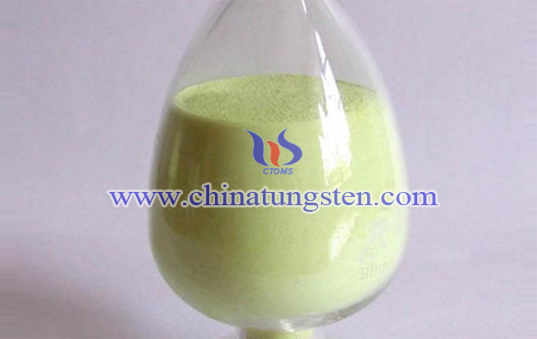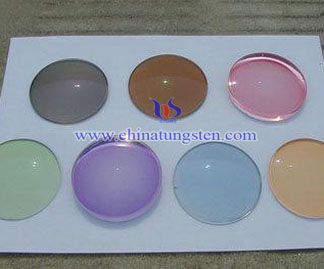Tungsten Oxide Photochromic Thin Film

Tungsten Oxide Photochromic Thin Film
Tungsten oxide is a good photochromic material, which has been widespread attention and study since the first reported in 1973 from amorphous tungsten oxide film photochromic phenomenon. In the year of 1980, Gerard and others firstly prepared HxWO3-Y films by vacuum deposition method through varying the degree of vacuum based on the predecessors. Later, they switch to sputtering method, prepared the HxWO3-Y film under the atmosphere of Ar-O2 (preparation of pure substoichiometric film), Ar-O2-H2 and Ar-O2-H2O (changing the hydroxide composition of WO3).
Influencing Factors of Tungsten Oxide Photochromic
Tungsten oxide photochromic has many effecting factors, not only the structure and composition of the factor itself, but also the atmosphere will affect its color performance. The structures of tungsten oxide are many from the point of view of the internal structure. From relatively stable triclinic, monoclinic to cubic, tetragonal to the very unstable hexagonal bronze, pyrochlore phase, however the most studied is the photochromic property of amorphous (a-WO3) or crystalline (c-WO3) film.
Study has found that a-WO3 has a better photochromic property than c-WO3, the mainly reason is c-WO3 having lattice defects or a smaller specific surface area. The inner reason mentioned above is determining the nature of the substance; however the external cause to the tungsten oxide photochromic is also underestimated, especially the impact of the different atmosphere. From the angle of coloring, some of the hydrogen or hydroxyl organic vapors favorable reaction rate and improve the color of tungsten oxide and absorption intensity. For decolorization aspects, it affected large by the oxidizing gas, such as O3, H2O2 and FE2 (SO4) 3 etc.. These factors have great help on increasing the tungsten oxide on the photochromic performance, also conducive to the production of a more favorable performance of the photochromic material.
Tungsten oxide photochromic detection
Study on the tungsten oxide photochromic has been almost half a century, however it developed very slowly because the selected uncertainty characterization and the unity of change color light source. In 1973, Dbell used urbach rule: K = K0exp {-B (E0g-hv) / KT} wherein hv is radiant energy, B is the constant feature of the materials. The key to realizing discolor is selecting the appropriate light source. The current sources are mainly two kinds of pressure mercury and high-pressure xenon lamp, using the different wattages of light sources, mercury lamp has 500W, 400W, 250W, 150W, etc; xenon lamp has a 50 () W, 200W, 150W, 75W and the like. Although, the wattages only change the light intensity, it reflects the color properties of tungsten oxide. Especially from the considering of different needs, sunglasses manufacturers have been pursuing for the electrochromic material under the sun light; however, the high-band color and long-term stable material is demanded in the field of information; while the display aspect requires a material with fast decolorization performance. Therefore, tungsten oxide photochromic material still has a long way to go.
Most scholars reached by UV spectroscopy to detect discoloration after light source material, but the method can not measure the color change process in a short time, thus makes us forced us difficult to accurately grasp the mechanism and process of the discoloration. The discoloration of tungsten oxide was detected until 1993 by using a highly sensitive technique--TR, and gave the conclusion of the decolorization tungsten oxide reversible process, and proposed the views of rate and colored light related to the number of electron-hole pairs. In addition, tungsten oxide discoloration process can be detected by EsR, XPS and other means, but the two instruments can not be served as a common means of representation with the very expensive price.
Tungsten trioxide film can render color by irradiation with light of the appropriate energy, the photochromic reaction mechanism of WO3 films may be displayed by the following equation: WO3 + hv → WO3 * + e-+ H+ H++ 1/2H2O → H++ 1/4O2 WO3 + xe-+ xH+ → HxWO3
When the WO3 film irradiated by light, electrons e- and holes H+ will be generated, photo-generated electrons go into the WO3 conduction band, the photo-generated holes react with the H2O adsorbed on the film surface and generate H+, and then spread into the WO3 inside to result in a color changing . Pure WO3 film only ultraviolet light sensor, therefore, considering about the WO3 initial film which has not been pretreated, electrons and holes can only be excited by ultraviolet light generated, when after cathodic polarization, it resulting lattice trap level, these energy levels are within the band gap region which can be stimulated by the visible light and caused visible discoloration.

